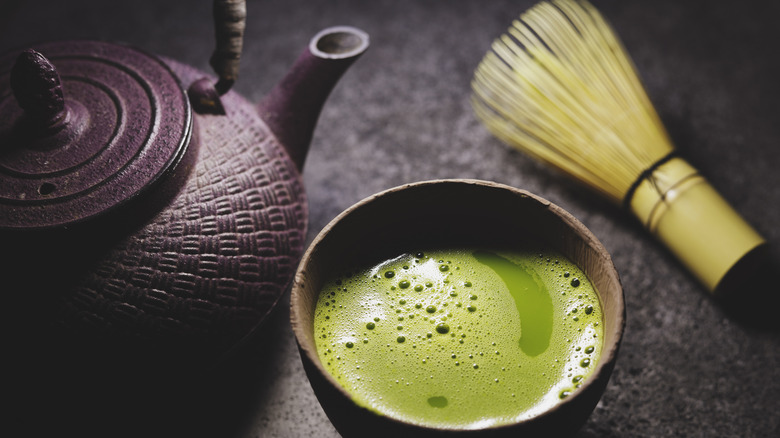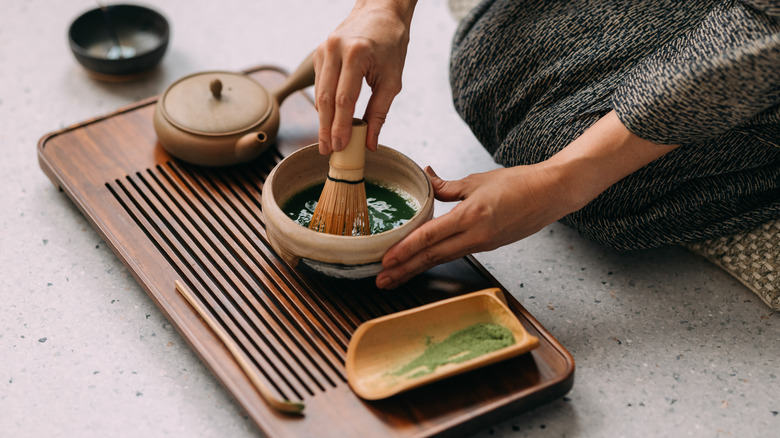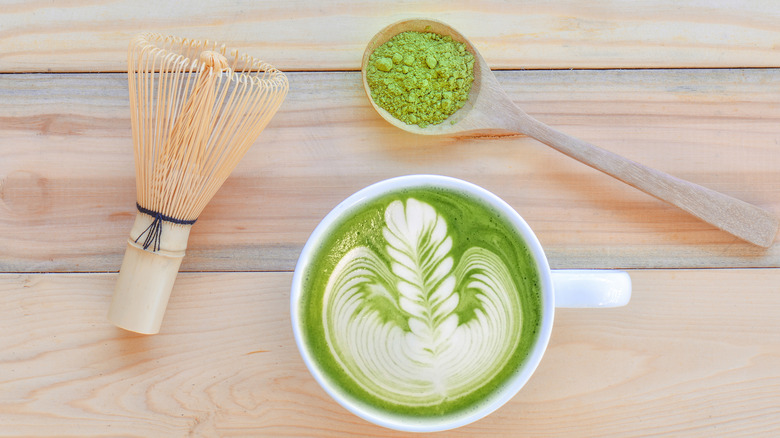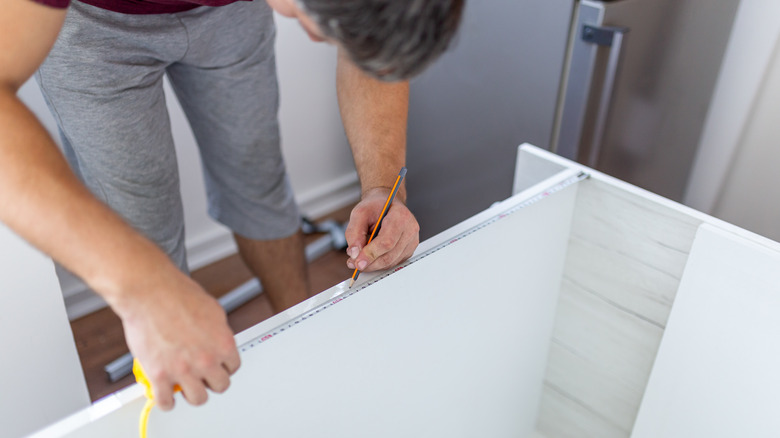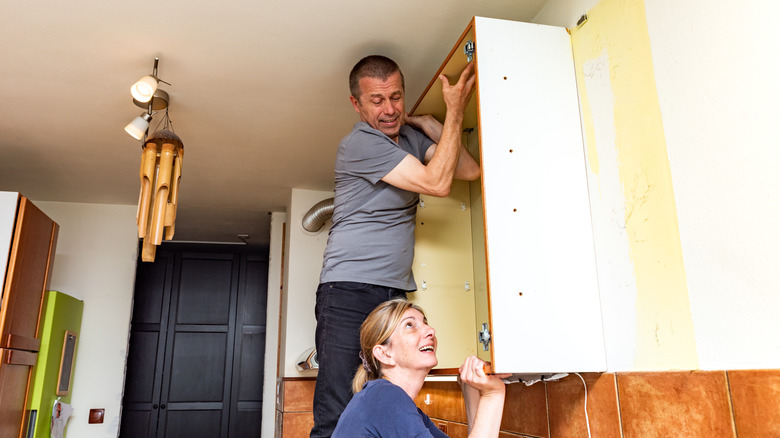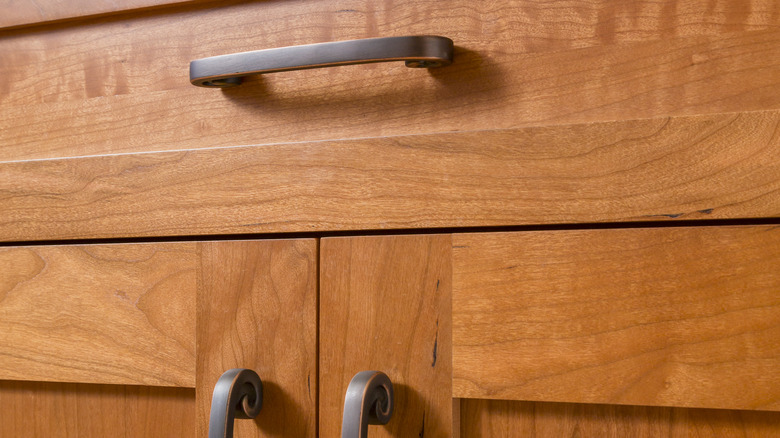Why You Use A Bamboo (Not Metal) Whisk When Making Matcha
Matcha has become a widely popular drink, and while you can easily get this special variety of Japanese green tea at your local coffee shop, a devoted matcha drinker may prefer to have a home kit, including a chasen, or bamboo whisk. You may assume that a standard metal whisk can be used in its place, but there are a few things you should consider before attempting to use one for matcha.
@ethanrodecoffee Your matcha deserves better than a metal whisk #matcha #matchawhisk
Chasens are designed differently than metal whisks. Made from a single piece of bamboo, it will have many small tines, between 80 and 120 of them, designed to thoroughly froth your matcha. If matcha powder is not correctly incorporated, it can clump or go flat instead of developing a light, airy foam on top. Metal whisks, which have far fewer tines than bamboo whisks, will not properly aerate your matcha to achieve the desired texture. The metal can also have an adverse effect on the flavor. Additionally, a bamboo whisk will not scratch up the bottom of your cup the way a metal whisk might.
Bamboo vs. metal whisks
Matcha is a drink that is steeped in ritual. Dating all the way back to the 1100s, Zen Buddhist monks in Japan began growing the plants used to make this tea using seeds from China. Grown in the shade, only the tenderest parts of these plants are harvested for their leaves, which are then steamed, deveined, and ground to produce a fine powder. The highest quality matcha is sold as "ceremonial grade," and anything of lesser caliber is sold as "culinary grade."
The process of making matcha is expensive and time-consuming, but the rituals involved in drinking it are no less specific. Matcha is used traditionally in ceremonies in Japan, where it is whisked into hot water with a bamboo whisk until frothy. These whisks date back to around the 15th century, and are still made by specialty artisans in Japan today. In addition to their aesthetic appeal, their impact on the final flavor and texture of your matcha are unmatched.
How to make matcha
Though these days, you might find matcha lattes all over the place, consuming matcha in a traditional way is well worth the effort. First, make sure the matcha you're using is ceremonial grade, not culinary grade, which will be more bitter. Ceremonial grade matcha, which is a brighter color and has a more nuanced flavor, should be labeled according to its classification. Despite the name, culinary grade matcha doesn't necessarily mean that it is designed to be used for cooking, though it would be unlikely for someone to use expensive ceremonial grade matcha in something like a matcha cookie.
You may want to sift your matcha into your cup to prevent clumping. Then add a little bit of hot water and begin whisking. Whisk your matcha in a W-pattern to evenly incorporate it. (If you don't have a bamboo whisk, a milk frother is a better alternative than a metal whisk as it will better incorporate the powder.) Add more hot water as you go along, or milk if you're making a matcha latte. Once ready, your matcha should be foamy and produce a fresh, grassy smell. Be sure not to wait too long to drink your tea, as it may settle to the bottom of your cup over time.
One of the trickiest parts of selecting used cabinets for your kitchen renovation is ensuring they will fit your space and your budget. According to Forbes, a successful kitchen renovation often averages between $27,000 and $60,500, and cabinets account for close to 30% of those funds! One of the best ways to save is to purchase used cabinets for your kitchen. But you want to be sure they are high quality and will fit your project's needs. For example, how do you know how much cabinetry is right for your space? And are certain materials better than others?
You'll also need to keep in mind that going the repurposed route will require a little imagination and some DIY spirit. But if you're the kind of person who prides yourself on original style, this project may be right up your alley. They say the kitchen is truly the heart of the home. Ready to pour some heart into yours? Here's how you can draw up a foolproof plan and find cabinets to help you create your dream kitchen without busting your budget.
Measure once, measure twice
One of the trickiest parts of selecting used cabinets for your kitchen renovation is ensuring that they will not only fit your budget but also your space. It might sound like a simple task; however, factoring in appliance placement, door trim, and electrical outlets can jam up your plans if you're not careful.
To avoid that scenario, create a perfect kitchen layout incorporating appliances and work centers, like your oven, refrigerator, and sink. These form what's commonly referred to as the kitchen's work triangle because the cook will need to move fluidly between them. Use your imagination and even try moving around the space to determine if there will be a good flow between these critical areas.
On the same note, don't forget to plan for a satisfactory work aisle for whoever will be using the kitchen. Experts recommend from 36 inches for one cook to 48 inches if you plan to have multiple people cheffing it up at once. Another pro tip is to think carefully about your overall cooking area. Leaving a minimum of 12 inches on one side of a cooking surface and 15 on the other should suffice. The idea is to balance efficient use of the space with the aesthetic.
What are you willing to put in?
Once you have a good sense of how much cabinetry your project will require, you need to be honest with yourself about the potential work ahead. While the dream would be to find used cabinets that check all your boxes from the get-go, it's likely the ones you source will need some work. Now is the time to pause and weigh what might need to go into restoring repurposed cabinets to make them truly match your vision.
If you're ready to tackle this project with the passion and flair of Chip and Joanna Gaines, then it's time to have some DIY fun. Think of your newfound cabinets as a blank slate. Imagine what they could look like once you clean, sand, and patch them. Better yet, what could a coat of paint or stain do? This is where buying used has a big advantage because you can get as creative as you want. In an article for Architectural Digest, pro designer Jenn Feldman of LA's Jenn Feldman Designs said, "Everyone really has the tool belt today to start figuring out how to make their homes better at any stage of life."
Know your wood
Kitchen cabinets can be made with various materials, ranging from plywood to solid wood. Before you begin your project, it's important to know what quality you're looking for. Cabinets made at least in part with presswood or laminate will be less expensive. But they may lack the refined looks or longevity you're going for, particularly because they've already seen a fair amount of wear and tear.
On the other hand, hardwood cabinets can still have plenty of life left in them. But there are key problems to keep an eye out for. Hardwood can warp, especially if exposed to water, which can certainly happen in a kitchen. So you'll want to be sure that hasn't occurred. Significant stains can also be challenging to remedy, so consider whether any visible eyesores can be taken care of with a little sandpaper and DIY spirit.
According to experts, some types, like oak and cherry, offer more durability, while others, like pine, are more likely to get dinged. The type of wood also plays a significant role in appearance. Some, like hickory, feature a more pronounced grain, and others, such as birch, have a finer pattern. Browsing Pinterest in advance and generating a style board for your remodel can help you hone in on which woods are the most appealing to you.

